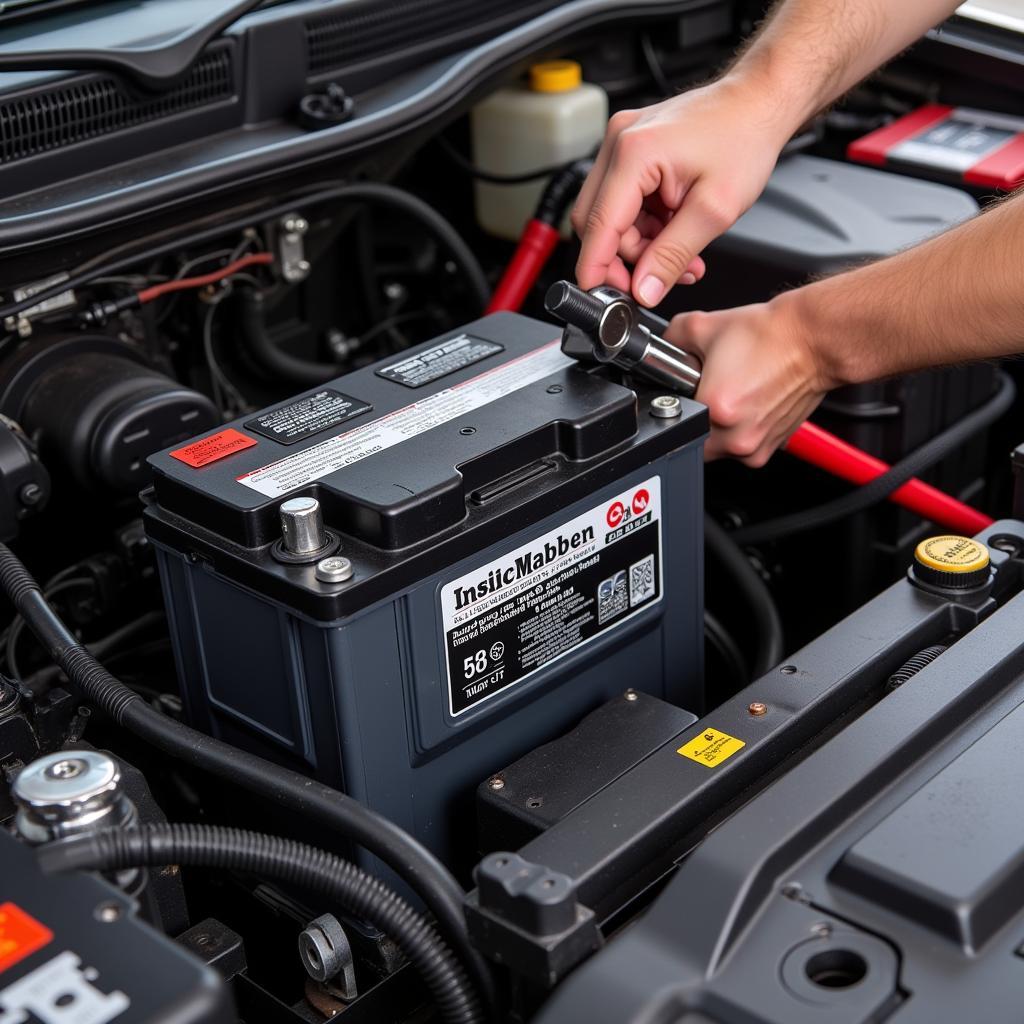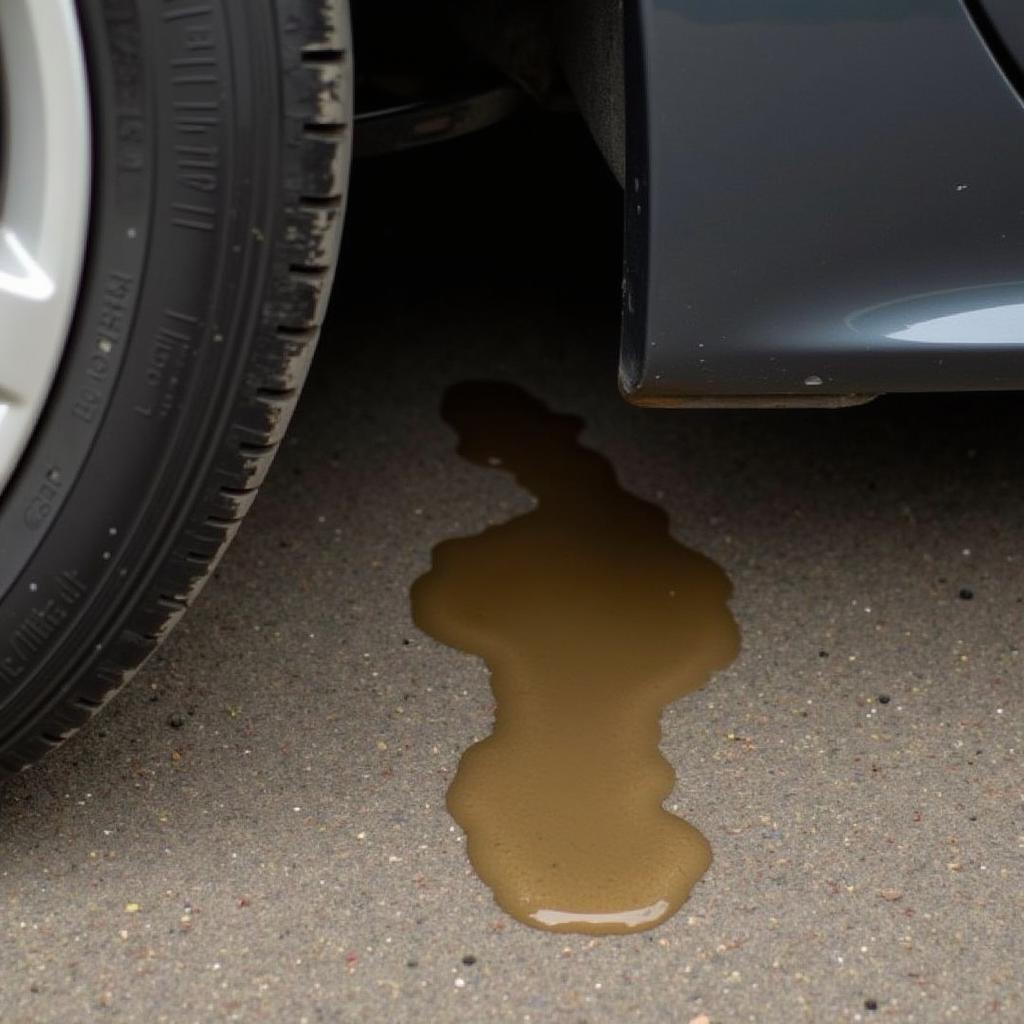You’re driving down the road, enjoying the open highway, when suddenly a warning light illuminates your dashboard, displaying a blue fluid symbol. This is the AdBlue warning light, and it’s signaling that your vehicle’s AdBlue system is experiencing issues. You might be wondering why this light is on and what you can do to get it off. Let’s delve into the reasons behind this pesky warning light and explore the steps you can take to address the problem.
Understanding the AdBlue System
AdBlue, also known as DEF (Diesel Exhaust Fluid), is a crucial component of modern diesel vehicles, especially those equipped with SCR (Selective Catalytic Reduction) technology. It’s a solution of urea and deionized water that helps reduce harmful NOx emissions from diesel engines.
The AdBlue system involves a tank where the fluid is stored, a sensor that monitors fluid level, and a dosing unit that injects the fluid into the exhaust system. When the sensor detects low AdBlue levels or a malfunction, the warning light illuminates, indicating that the system needs attention.
Common Reasons Why the AdBlue Warning Light Stays On
Several factors can trigger the AdBlue warning light to stay on. Here’s a rundown of the most common causes:
1. Low AdBlue Fluid Level
The simplest reason for the warning light is that your AdBlue tank is running low. The system is designed to give you a warning when the fluid level reaches a certain point, typically around 10% of the tank’s capacity. In such cases, simply topping off the AdBlue tank will usually resolve the issue and the warning light will extinguish.
Expert Tip: Always use genuine AdBlue from reputable suppliers to ensure optimal performance and avoid potential system damage. As a seasoned technician, I’ve encountered numerous cases where using counterfeit or incompatible fluids led to costly repairs.
2. AdBlue Sensor Malfunction
The sensor that monitors AdBlue levels can malfunction, sending inaccurate readings to the engine control unit (ECU). This can lead to the warning light illuminating even if there’s sufficient AdBlue in the tank.
Expert Tip: If you suspect a sensor malfunction, a professional diagnosis with a diagnostic scanner is crucial. This will help identify the specific sensor issue and guide you towards the appropriate repair.
3. AdBlue Dosing Unit Problems
The dosing unit is responsible for accurately injecting AdBlue into the exhaust system. If it malfunctions, the correct amount of fluid may not be injected, triggering the warning light. This could be due to a faulty dosing unit, clogged injectors, or a blockage in the lines.
Expert Tip: Addressing dosing unit issues requires specialized tools and knowledge. It’s best to consult a qualified technician for diagnosis and repair to prevent further complications.
4. Electrical Problems
Electrical issues in the AdBlue system can also lead to the warning light staying on. This could involve faulty wiring, a short circuit, or a problem with the ECU.
Expert Tip: Electrical problems can be tricky to diagnose. A competent technician with expertise in automotive electrical systems is essential for identifying and resolving the issue effectively.
5. AdBlue System Software Glitch
Sometimes, software glitches within the AdBlue system can trigger the warning light even if there’s no real problem. A software update might be necessary to rectify the issue.
Expert Tip: If you suspect a software glitch, consult your car’s manufacturer or a qualified technician. They can check for available software updates and apply them if necessary.
Resolving the AdBlue Warning Light: A Step-by-Step Approach
Here’s a comprehensive guide to help you address the AdBlue warning light:
- Check the AdBlue Fluid Level: First, check the AdBlue level in your vehicle’s tank. If it’s low, simply refill it with genuine AdBlue. The warning light should go off within a short time after you’ve topped off the tank.
- Drive the Vehicle: After refilling, take the vehicle for a short drive to allow the system to reset. The warning light may go off automatically as the ECU recognizes that the AdBlue level is sufficient.
- Perform a Reset (If Applicable): Some vehicles allow you to manually reset the AdBlue warning light. Consult your owner’s manual for instructions specific to your car model.
- Seek Professional Diagnosis: If the warning light remains on even after refilling and resetting, it’s time to seek professional help. A qualified technician can use a diagnostic scanner to pinpoint the exact problem and provide a solution.
Is It Safe to Ignore the AdBlue Warning Light?
It’s not recommended to ignore the AdBlue warning light. Ignoring it can lead to serious consequences, including:
- Reduced Engine Performance: Without sufficient AdBlue, your engine may experience reduced power and performance.
- Increased Emissions: AdBlue is crucial for reducing harmful NOx emissions. Ignoring the warning light will result in higher emission levels, potentially leading to fines and legal issues.
- System Damage: Continued operation with low or no AdBlue can damage the SCR system and lead to costly repairs.
Conclusion
The AdBlue warning light is a critical indicator of potential problems in your vehicle’s emission control system. Addressing it promptly will ensure your vehicle’s optimal performance, reduce emissions, and prevent costly repairs. If you encounter this warning light, follow the steps outlined above to identify the issue and resolve it effectively.
Don’t hesitate to consult a qualified technician if you’re unsure about troubleshooting the AdBlue system. Their expertise can help you resolve the problem quickly and efficiently.
FAQ
Q: What happens if I run out of AdBlue?
A: If you completely run out of AdBlue, your vehicle will go into “limp mode,” restricting its speed and performance. You’ll need to refill the tank with AdBlue to restore normal operation.
Q: Can I add water to the AdBlue tank?
A: No, never add water to your AdBlue tank. Water will dilute the urea concentration and damage the AdBlue system.
Q: How often should I refill my AdBlue tank?
A: The frequency of refilling depends on your driving habits and the size of your AdBlue tank. Refer to your owner’s manual for specific recommendations.
Q: Is AdBlue harmful to the environment?
A: AdBlue is a non-toxic, biodegradable solution. It’s designed to improve air quality by reducing harmful emissions.
Q: Can I use any type of urea solution in my AdBlue tank?
A: No, only use genuine AdBlue that meets the ISO 22241-1 standard. Using other urea solutions can damage your AdBlue system.


